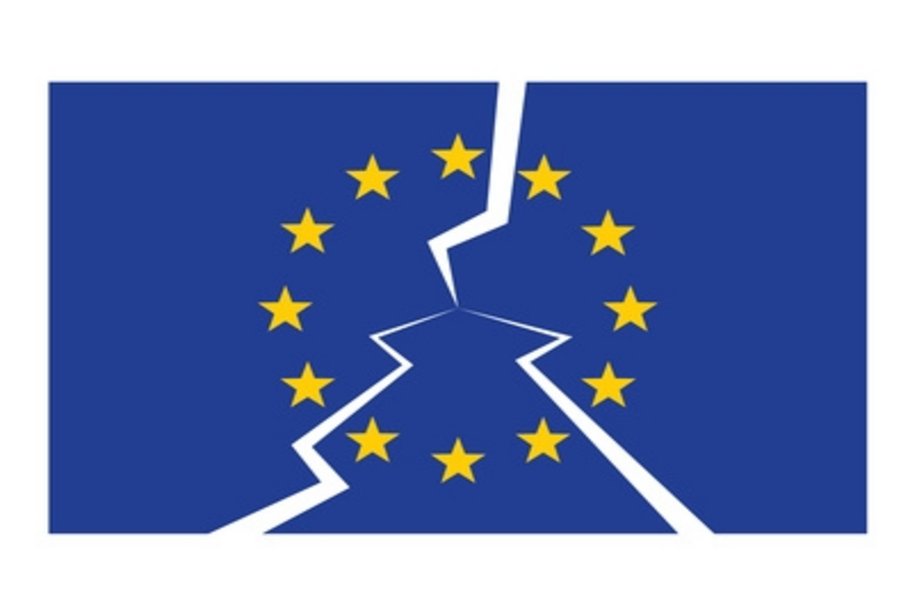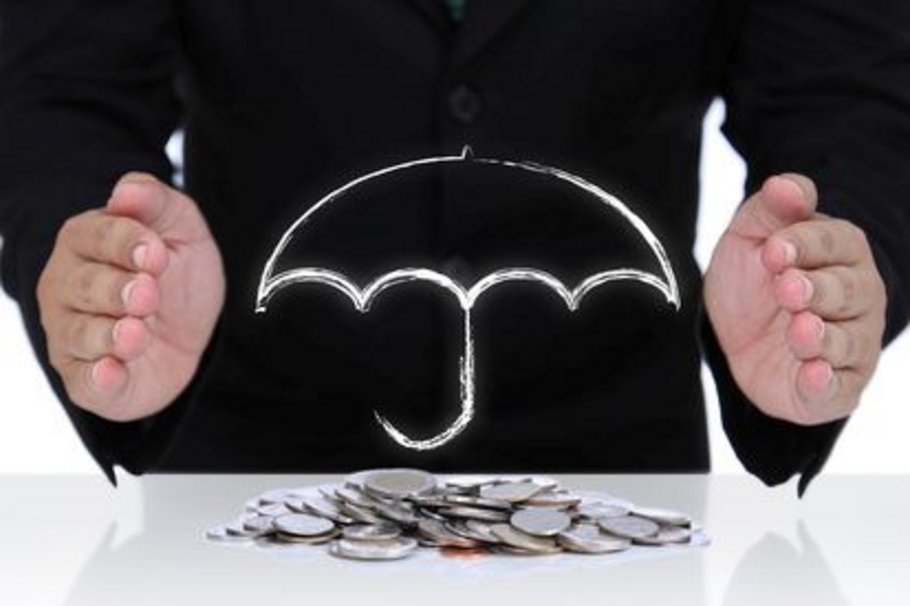A value at risk (VaR) explosion will drive a risk-off scenario. Less transparency, lower growth, a risk of deflation, and lack of understanding add up to less positioning and the risk of breaking support levels in equities (DAX futures support at 10,668 is my entry sell level).
The USD should weaken. I see 1.14/1.1500 against the euro before retesting 1.1000 but then higher into year-end (1.1900 target, see chart below). The action taken by China is setting in motion events that will change the consensus from the recycling of excess capital from Asia to the US bond market and probably a significant reduction in China's $3.6 trillion in FX reserves. In simple terms, the US will get less help to finance its deficits from Asia and the price paid for this will be a continued rise in the cost of capital (which can already be seen in bond yield spreads). Add to this the fact that that the USD's strength is inversely correlated to the rate cycle (a higher cost of capital makes USD weaker; as the price of money goes up, the price of the dollar needs to adjust down for a reserve currency).
Commodities or real tangible assets will become more attractive. China opening up; the Swiss National Bank not supporting the CHF floor; the Federal Reserve and the Bank of England leaving quantitative easing behind; and less recycling will see the USD peak, and the process of coming from zero growth, zero interest rates and zero hope will leave all "paper" assets with an expected return of… zero. Hence, more attractive valuations for things like gold and silver (which remains my favourite long). Chinese investors are already moving into gold (as seen in the chart below) as they leave real estate, stocks and state bank deposits behind for the only currency NOT controlled by a central bank: gold.
The USD will likely weaken against the euro as described:
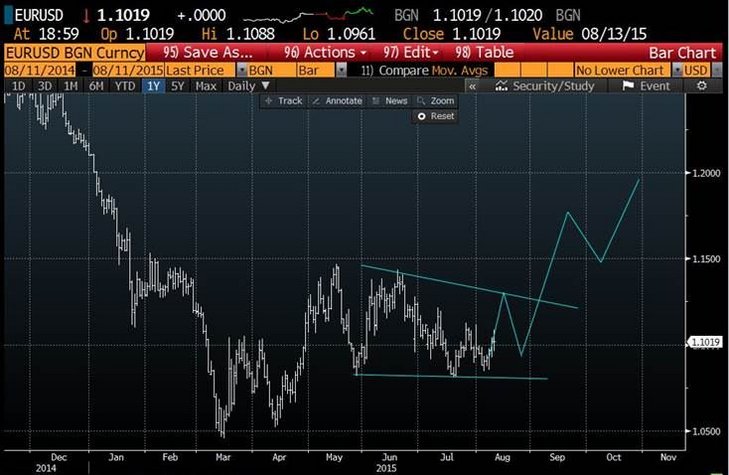
Gold/yuan (one-year, Source: Bloomberg):
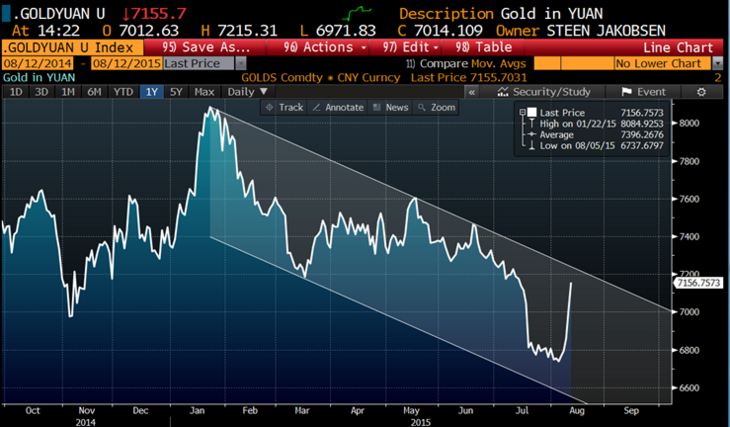
"Coming events cast their shadows before them" (山雨欲来风满楼) - Chinese proverb
The state of confusion regarding China is astonishing. Rarely have I seen so many smart people so confused at the same time.
China especially seems to remain an enigma for Anglo-Saxon analysts and strategists who were brought up with central banks and policy makers who want to extend-and-pretend at any and all cost.
I guess my conclusion is that China stopped pretending with this week's devaluation of the yuan.
The signs were there
I am a little upset with myself, as my recent trip to China in early July brought home three major points which should have given me some insight into this devaluation. First (and most surprising), the actual pace of the liberalisation going on in China was faster than even policy makers and regulators would have thought.
Secondly, the internationalisation of the CNY was a big talking point and something I constantly had to discuss and it is that circumstance that brings my to my third observation... all the major FX players in China were short the CNY!
Yes, I’m too stupid, but the bigger point is that China’s devaluation should not have come as a total surprise; instead, it occurred in a specific context.
This is a major step, a brave one, but one which perfectly fits the plan of supporting the Chinese economy as it crosses the "bridge" to the Silk Road project (which should come online in 2016/17).
The catalyst remains the internationalisation of the CNY, and this means being included in the International Monetary Fund's Special Drawing Rights (which again comes with the demand of a more market-based Chinese currency price).
That China has timed this move directly ahead of the Fed's potential September hike (note that vice-governor Dudley was out this morning saying that "…[it] may not be inappropriate for yuan to adjust to the economy") is a clear indication it will not stop the Fed.
There is also the fact that Beijing's move happened right ahead of Chinese president Xi Jinping's state visit to the US in September...
Yes, China has a plan. You may disagree, but it has a plan.
Where is the plan for Greece, Europe, Latin America, or even the US?
"Show me the money"!
Now before being taken for a total Sinophile, let me stress that having a plan is not necessarily the same as delivering. But if this devaluation is followed by further integration and better access to Chinese financial markets, it will be net positive over time.
How can moving from a closed capital account structure to an open economy be a net negative?
The devaluation will also have a net positive impact on Chinese growth, but to be honest I think the cocktail of lower rates (RRR cuts started in February) and lower commodity and energy prices will provide more stimulus for future expansion than will the changes made to the currency.
As a matter of fact, electricity consumption is slightly rising... this indicates that the worst is over, or that the lower input cost is working.
China electricity consumption (year-over-year) leading by three-month versus MNI China PMI (lagging):
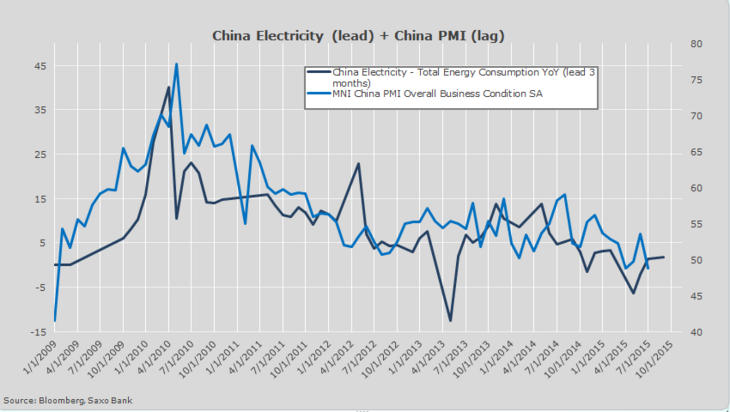
China bubble or not?
Many people I have talked to over the last 24 hours see China as "imploding”. Hmm... maybe a few data points are in order.
(I know, I know… facts are boring. But still ...)
According to a report from McKinsey, China's total debt to GDP is 282%.
This is high, but it's also relatively the same as the levels seen in other major nations:
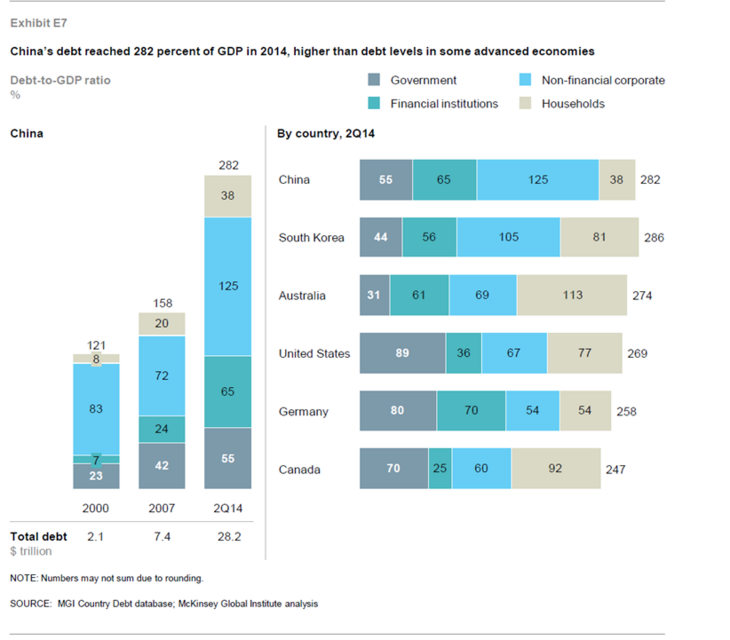
(Just in case you were wondering, Japan's debt to GDP ratio is 517%, and Spain’s is 401%.)
To me, this is the point. There is too much focus on the 3% move in CNY relative to the larger macro implications. China’s nominal GDP growth easily outgrows the price of debt and the country's gross domestic savings – 49.9% of GDP – provides a deep and stable source of funding for China’s authorities.
The McKinsey report is right to point out that the "velocity of growth in debt is concerning”, but here we also have to address the fact that China is coming of age, and is at a different point in its socio-economic cycle compared to developed markets.
This essentially means "investments before returns" and the good news is that from 2008 to 2010, China just spent more money. Now, however, it is opening its markets.
Perspective is needed
Finally, the move (so far at least) needs to be put in perspective: the CNY is 14% stronger than it was this time last year, the USD has risen against all currencies, and export volumes are down. Most importantly, China’s two main competitors – Korea and Japan – have devalued by 15% and 40% respectively over the last two years.
Bloomberg estimates that a 10% devaluation in the currency will mean a 10% growth in exports (in my opinion, a 10-15% sliding devaluation is very likely). The negative here is the risk of capital flight, but again, Bloomberg estimates that for every 1% move in the CNY, $40 billion leaves – so $400 bn for a 10% devaluation.
It's a risk, but it's one that China – with its $3.4 trillion of reserves – can afford.
But these are just words. The real test is how the market reacts over the next two to three weeks and to monitor this my dear colleague Mads Koefoed has created an INDEX/Instrument monitor that uses Monday's close as index-100 (before first devaluation).
This is the score so far (Source: Saxo Bank):

Or we can look at it sorted by performance since devaluation (Source: Saxo Bank):
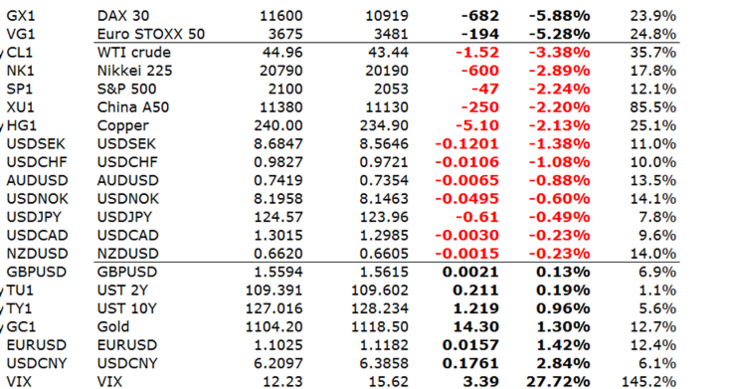
Indeed, I think that the Chinese proverb is right: coming events do cast their shadows before them. But one must wonder, however, whether another Chinese proverb is even more appropriate: "a wise man should not stand next to a dangerous wall"…
Only time will tell.
Finally, a Bloomberg chart done on the back of Fed vice-governor Stanley Fischer's Monday speech caught my attention. In world where everything is "priced to imperfection” economically, it’s interesting to see how job growth leads and correlates highly (>70%) with inflation (far more so than GDP growth).
Are we about to get an inflation surprise, or at least a re-pricing of future inflation? (Source: Bloomberg)
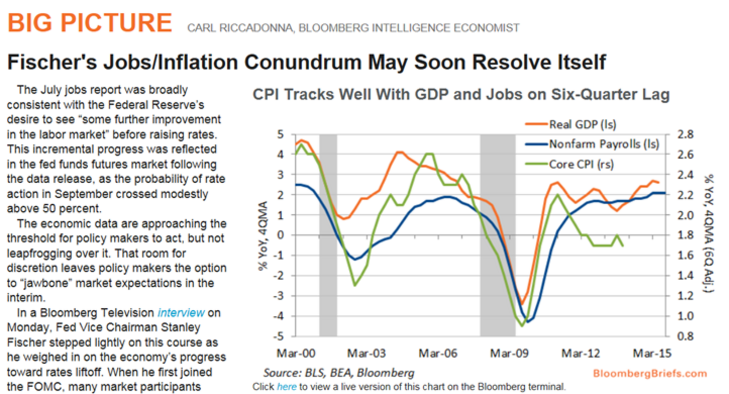
The Fed will hike in September. This remains my call on that, and I also maintain that the Fed hike starts a new market cycle with a lower USD, higher rates, and rising commodities.
Ultimately, however, the Fed remains the catalyst.
Author:
Steen Jakobsen, Chief Economist & CIO / Saxo Bank




